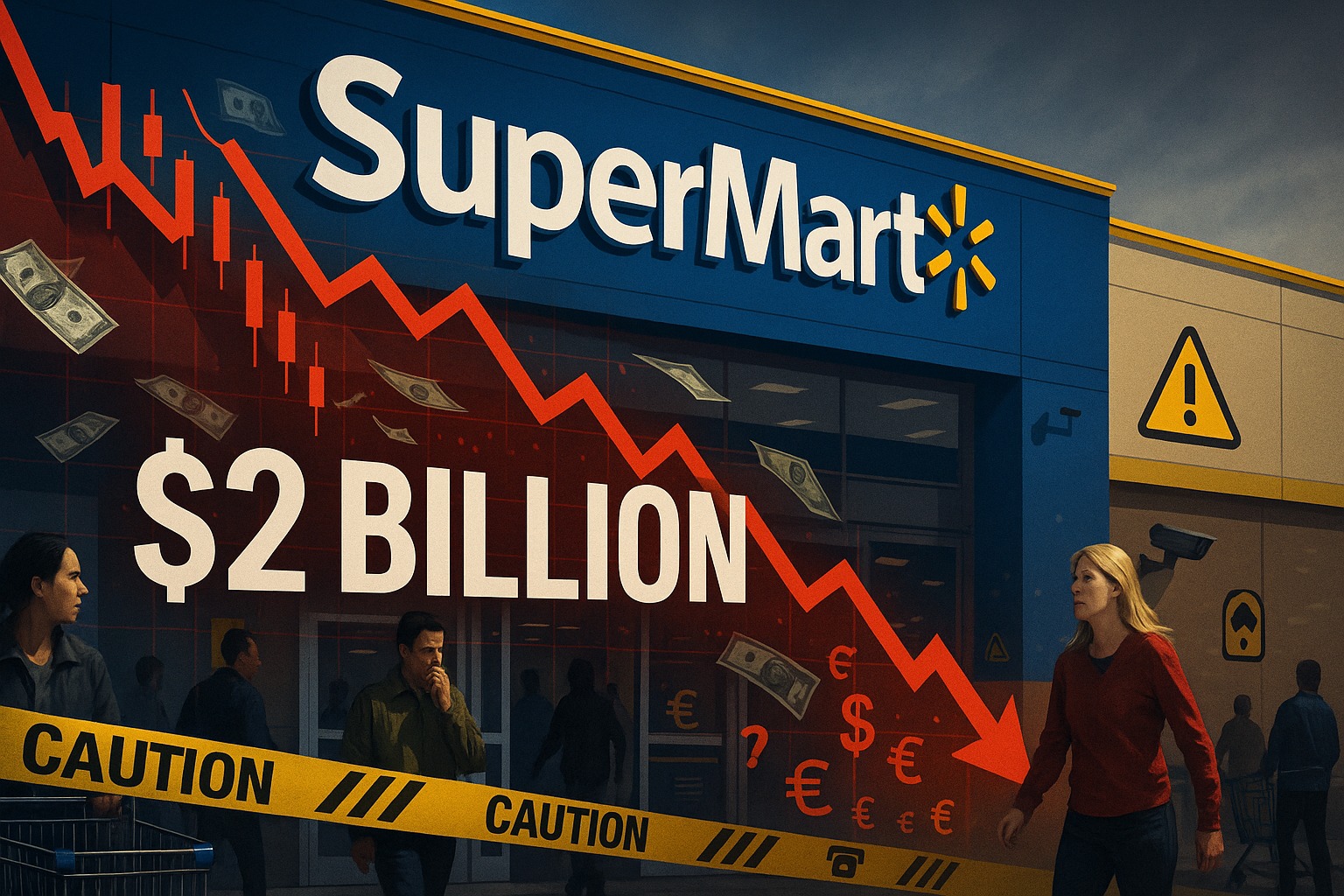In recent coverage, the retail giant Walmart Inc. finds itself facing a serious warning: they could lose $2 billion if the current threat to shoppers plays out. This is more than a headline — it’s a real potential financial hit tied to how shoppers use the store. The stakes here go beyond margins; it’s about business strategy, consumer behaviour and the fragility of some retail segments.
What’s going on?
Walmart’s risk stems from the possibility that tens of millions of consumers might suddenly stop spending at a pace the retailer has come to rely on. Specifically, the issue revolves around the Supplemental Nutrition Assistance Program (SNAP) benefits. When benefits are halted or delayed, the spending of that demographic drops, and Walmart – which captures a large share of that market – stands to feel it.
According to recent data, Walmart captures roughly 24 % of SNAP shoppers’ total spending. Given monthly SNAP spending levels, a full stop in benefits for even one month translates into the estimated $2 billion risk.
Why this matters to Walmart
- Dependence on volume – Walmart’s business model thrives on high volumes and low margins. When a sizeable consumer segment pulls back, the volume hit can ripple across other lines of business.
- Groceries and essentials weigh heavily – The SNAP-linked spending is concentrated in grocery and everyday-use categories. These categories often carry lower margins anyway, so a drop in spending intensifies pressure.
- Signal risk – Beyond the direct financial hit, there’s a reputational and strategic risk. If shoppers begin to doubt the retailer’s stability or accessibility of essentials, that can affect loyalty.
Who is being threatened? And why now
The threat is tied to the timing of government funding and benefit disbursements. With SNAP benefits potentially paused beginning November 1, millions of households may experience immediate cash-flow disruptions.
These households count on the benefits to make grocery purchases at stores like Walmart. If that stops, they either scale back or shift behaviour — and Walmart could lose the retail spend that flows through it.
Potential ripple effects
- Reduced in-store traffic: Fewer visits by SNAP households mean fewer impulse and complementary buys (household items, pharmacy, seasonal goods).
- Shrink in ancillary spending: When people tighten budgets, they often cut back on non-essentials — which may include items Walmart sells beyond groceries.
- Brand vulnerability: If Walmart appears exposed to external shocks (like regulatory or benefit changes), investors, partners and consumers may view it as less stable.
- Competitive spillover: Other retailers might grab share if Walmart falters in serving vulnerable segments or adjusting quickly.
What Walmart can do (and likely is doing)
- Strengthen omnichannel and convenience: By building stronger online fulfilment and store-pick services, Walmart could offset some in-store losses.
- Adjust pricing and promotions: Targeting budget-conscious shoppers directly could help retain the segment that might otherwise drift away.
- Lobby and policy engagement: Given the size of the risk, engagement with policymakers to ensure stable benefit flows becomes part of risk mitigation.
- Broaden income streams: Walmart has been investing in non-traditional areas (advertising, membership) to reduce dependence on core retail spend.
What this means for shoppers and observers
If you’re a shopper who uses SNAP benefits, this is meaningful: the indecision of policy affects your spending power, and consequently the store’s experience (inventory, pricing, availability). For market watchers, this is a case study in how external policy decisions translate into hard dollars for a major retailer.
Bottom line
Walmart’s potential $2 billion loss isn’t about a bad quarter or failed product launch — it’s about something deeper: the intersection of public policy, consumer behaviour and high-volume retail logistics. The magnitude of the risk underlines just how interconnected these spheres are.
For Walmart, the challenge is two-fold: manage the immediate threat (benefit cut-offs) and continue to reduce dependence on vulnerable spending segments. The $2 billion figure looms large, but it also shines a light on the fragility of even the largest retail players when key consumer groups face disruption.


